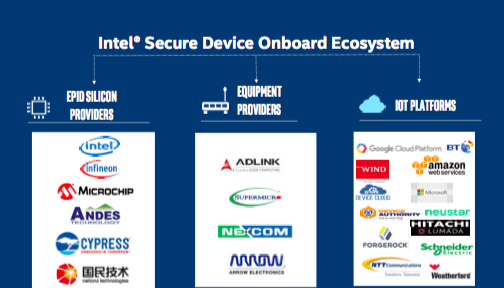
Chipmaker Intel wants a piece of the growing Internet of Things market and they have developed the Intel Secure Device solution to help companies provision IoT devices in a secure and automated way.
Dipti Vachani, vice president and general manager for the Internet of Things Group at Intel, says we hear that 50 billion IoT devices will be deployed by 2020, but there is a gap between that prediction and the reality her company is seeing.
“We are not seeing customers deploying. We are seeing rock-star proofs of concept, but can they get into the factory and deploy those things [at scale],” she asked.
The company has developed a free software development kit to help the industry solve a huge problem around provisioning IoT devices. If a firm is installing hundreds of smart bulbs, all of which communicate over WiFi, how do you do it in a secure way? The SDK gives companies a way to provision automatically and ensure that whatever the device — a smart light bulb, a sensor on a piece of equipment or a video camera — is a sanctioned device and can be installed securely automatically without human intervention.
This is particularly important when you are talking about IoT scale. This is a process that can benefit from automation because humans simply can’t keep up. When hundreds of devices are being deployed, it could take months or years to do it manually. A machine can do it in hours or days.
To make this work, Intel needs to work with the entire ecosystem, starting with the IoT device manufacturers to buy into this system. If they are Intel Secure Device solution-aware through the SDK, the next step is the silicon level of machines that are provisioning these devices. Finally it requires the IoT platform vendors to also buy in, so that the provisioning can take place on their systems.
An employee installs the Intel-aware device, which communicates to a server, which is part of an IOT platform. All of the parties understand this is a sanctioned device because the SDK has connected them all together and the provisioning process takes place automatically behind the scenes with little or no human touch required.
This will require Intel winning over the industry to implement, of course, but it already boasts and impressive set of partners on all three parts of the system.

Intel IoT Secure Device Ecosystem partners. Photo: Intel
Vachani says Intel is offering this solution for free because they see it in their interest to advance the IoT industry, and provisioning has been a substantial obstacle to this point. “It takes a village to scale IoT. We are talking about lots of players coming together and that’s the challenge in IoT. It’s hard to do [something like this] with a lot of companies, and it’s something we are able to do at Intel,” she said.
[“Source-timesofindia”]




